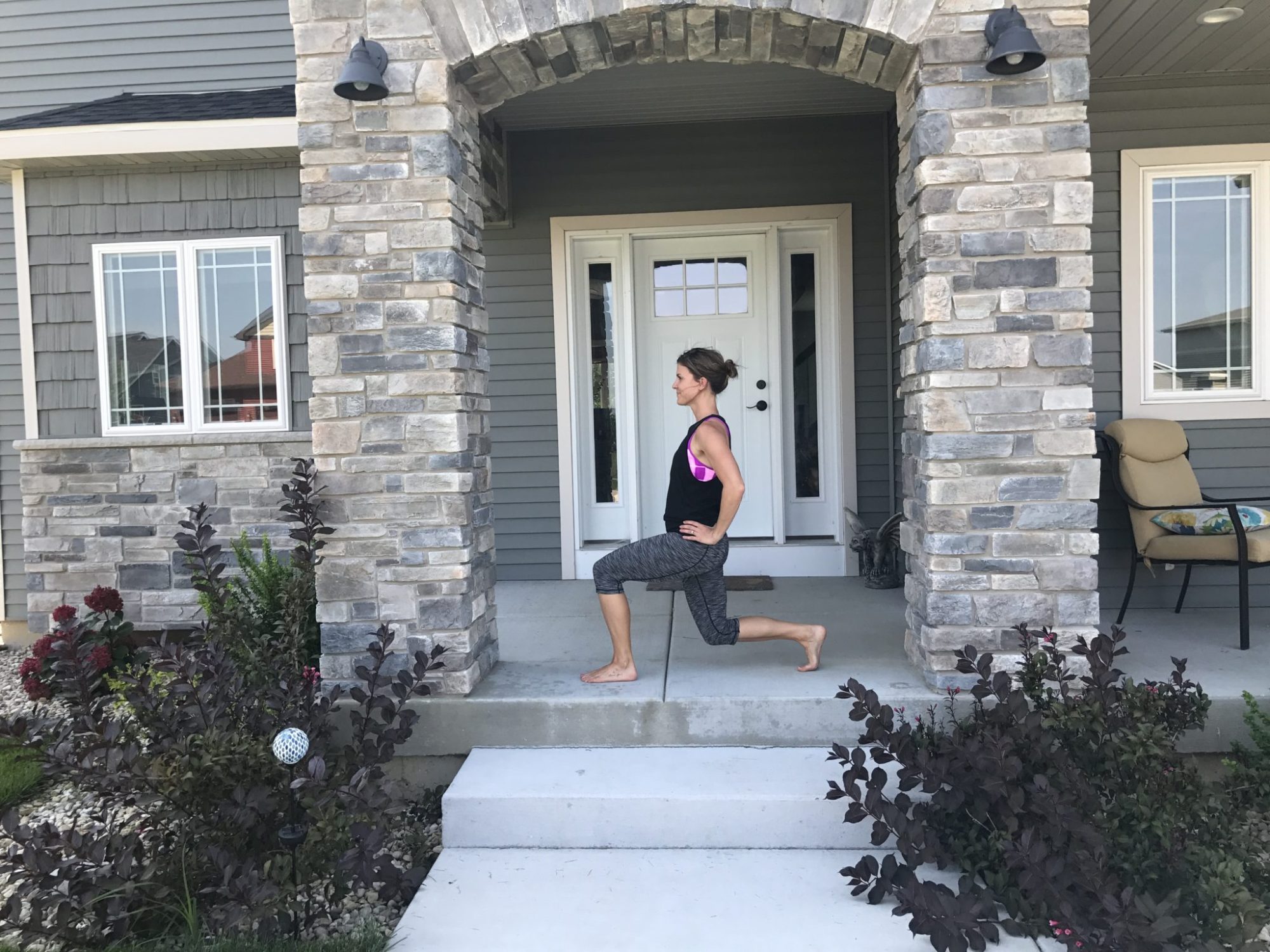Fitness
4 Moves to Master for a Strong Foundation
There is an overwhelming amount of information surrounding us when it comes to fitness nowadays. If you need new and fresh ideas you can hop on Instagram and search the #homevideos or #workout hash tags to be directed to thousands upon thousands of videos. As a Personal Trainer, I love this! It gives me (and many others) access to new ideas, routines, and challenges. The ultimate goal is to become strong.
The downfall is that sometimes we are getting a bit too fancy. I am guilty of this as well, because it is fun, however fancy moves can make you more prone to injury regardless of your fitness level. You must master the basics before moving onto more advanced exercises. In this post I will share with you 4 basic moves I highly recommend mastering before moving on to more advanced exercises.
I became a fitness instructor my freshman year of college. When I went to school I wanted to avoid the freshman 15, especially after walking into the dining hall and seeing the soft serve machines! It was a huge step for me. I had to audition in front of all of the group exercise instructors who older, certified in a multitude of specialties, and the other applicants.
After the girl before me completed her audition with a 5 minute yoga routine I almost immediately regretted my decision to audition with step. I had only taken a few step classes, but loved it so I chose that for my routine. Too bad, so sad, I was already there and had no choice. I gave it my best with a “fake it ’til you make it” attitude and luckily after my 5 minute routine (with at least a few mistakes) I was done. I found out a few weeks later I was hired.
Let The Training Begin!
Becoming a fitness instructor was one of the coolest decisions I made in college. I learned step, aqua, yoga, spin, kickboxing, Turbo kick, and my very favorite, Zumba. A few years later I became a Personal Trainer. I taught for many years after college. In fact I taught Zumba and Yoga while pregnant with my firstborn all the way up to her due date. I unfortunately had to take a break with my middle son because I had Placenta Previa, a serious condition in pregnancy warranting restrictions on activity and movement. This is when I learned what it was like to really have to start fresh again as far as fitness.
Post Baby Body
After having my son, getting back to exercise was very challenging. Post pregnancy exercise can be tough after a vaginal delivery. It is typical to be cleared around 6 weeks post delivery to exercise after a normal vaginal delivery. The first few weeks are challenging but you get into the swing of things pretty quickly.
Cesarean deliveries are much more difficult. 12 weeks is the typical milestone to be cleared for exercise after a c-section. Your internal incision and external incision should be healed up well as long as you didn’t overdo any lifting during that time (or sneeze too hard too often – C-moms know what I mean)! It is time to start working out. Yet when you start out after limitations for 12 weeks you baby your body a little bit because of the pain you remember from having those incisions. It is a slower and more challenging road to regaining your pre-baby fitness level.
Time to get back to the basics
When you are ready to get back to exercise it is important to build up slowly, but be consistent! If you are a runner you may start with a 2-3 mile run/walk building up to a 5k run over a few months. I personally run about once a week because it feels great to put in some good music and just go. Plus, I do it for my dogs. Other than that, running is not my thing unless it is accompanied by sprints. I prefer strength training. You burn more calories lifting weights during the workout and post workout, feel stronger, and reduce risk of injuries as you age. What you don’t want to do it start with a 3x weekly HIIT training program after baby.
Whether you are post-partum, newer to weight training, or recovering from an injury – start with these 4 moves to master a strong foundation.
I incorporate these exercises into my strength training days at least once weekly. These moves are essential for daily activities, range of motion and balance. Building a solid foundation with these exercises allows you to add on to each exercise as you get stronger and ready for compound moves. Each exercise can be done with or without equipment.
The Squat
The squat is an essential move to master. You should use your leg muscles to lift household items, babies, furniture, you name it! A squat with good form can mean the difference in strong gams or a back injury.
When you squat imagine you are hovering over a porta-potty. Look down to make sure you can see your toes. If you can’t, sit back further. Drive the weight towards your booty by making sure you can wiggle your toes if you want to.
Lastly, tilt your back under so you are not arching. The arch is great if you are twerking, kidding (kinda), but a big no-no for a proper squat.
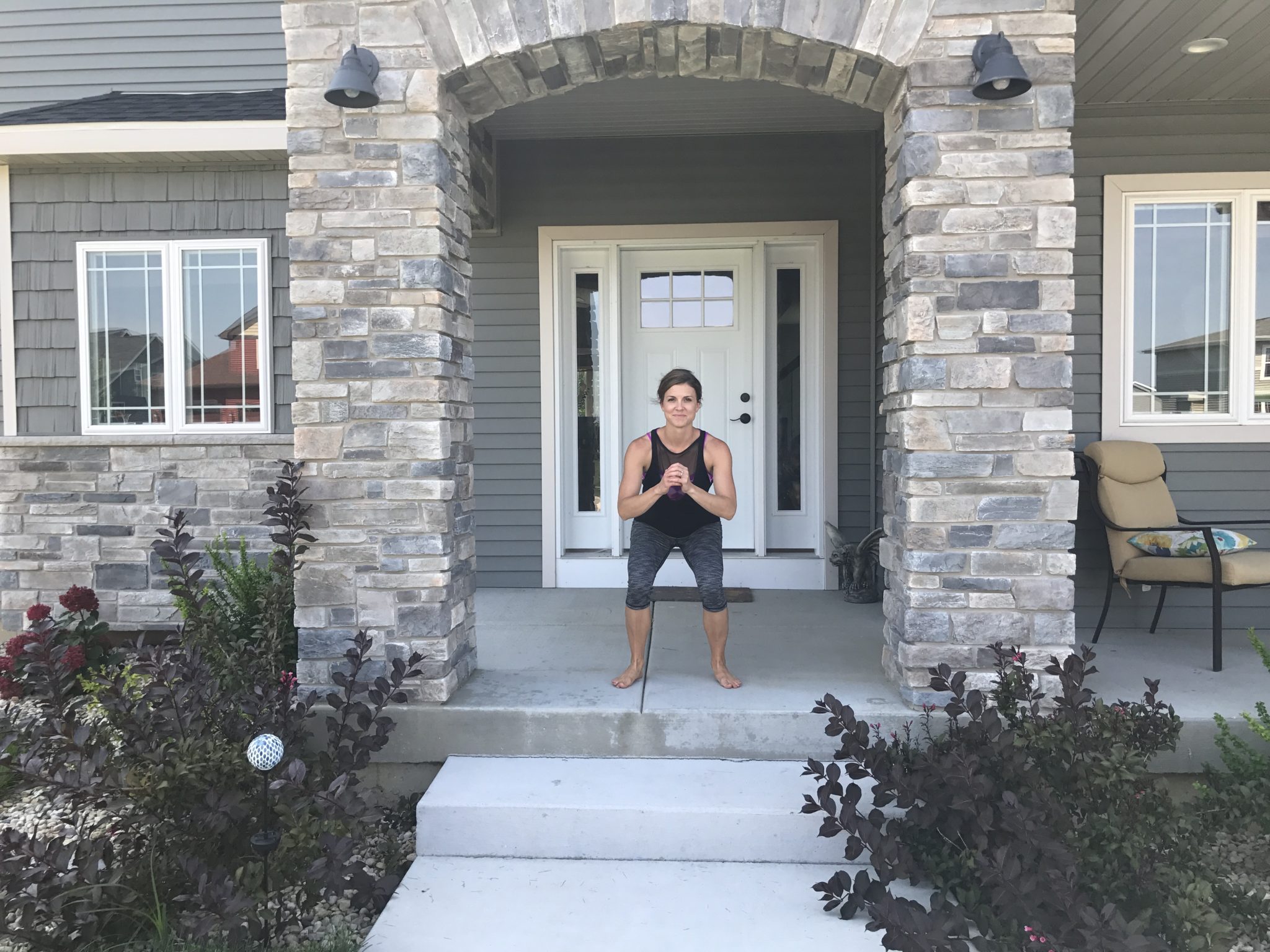
The Lunge
Lunges are another great exercise for your glutes, thighs, hamstring muscles, and calves. The lunge helps to strengthen the hip flexors and keep them flexible. Hip flexor tension is one of the most common causes of low back pain, as the back compensates for tight hip flexors. Hip flexors are located at the front of your pelvis near the top of your quadriceps. When I work with people who have back pain, tight quadriceps and hip flexors are often the root cause.
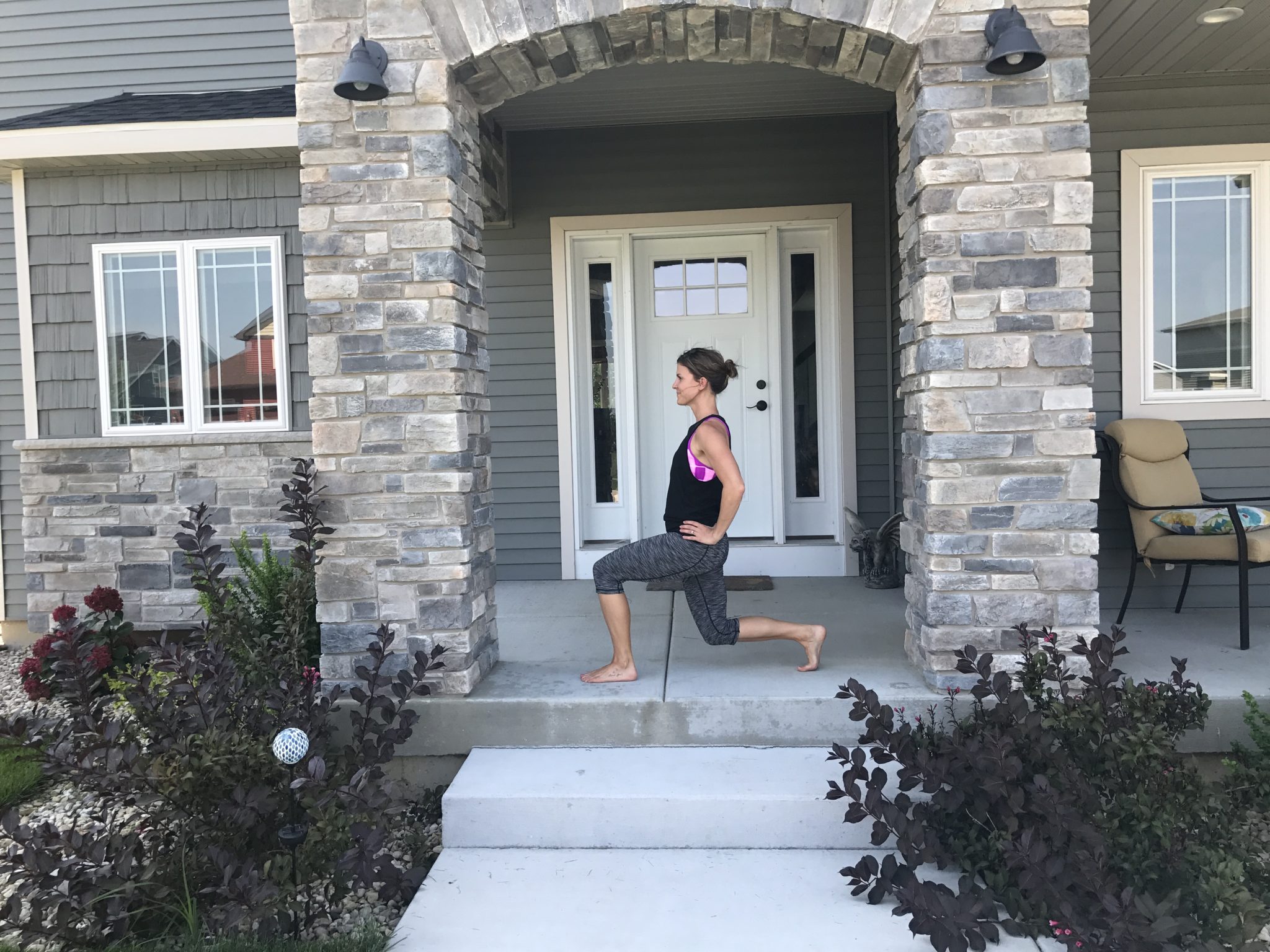
The Step Up
The step up is the last lower body foundational exercise I want you to master. It seems so basic but makes a huge difference in the strength of your lower body.
I am a big believer in functional exercise, meaning performing exercises that are going to help you in your day to day living. For a baseball player an example exercise may be the woodchop. For a mom, one of the exercises is the step up. How many times do you walk up and down stairs every day? It is a basic movement but important to build on.
As you advance in this move you will add weights in your hands to add resistance. Before you know it you will be running up the stairs super fast (when you hear something crash), without even losing your breath.
You can use the stairs (skip one -two stairs), a step outside, a step stool, or a chair to perform the step up exercise.
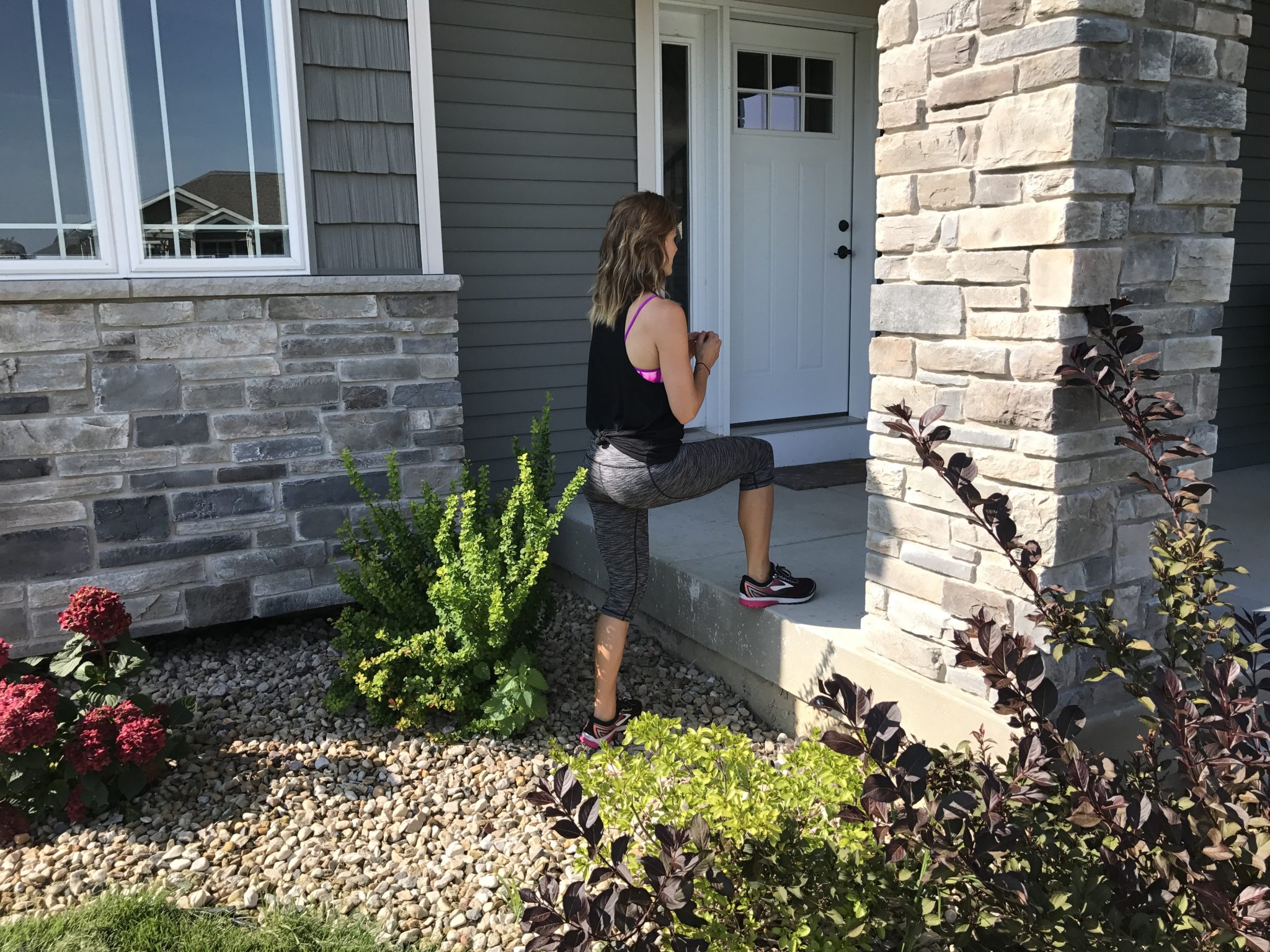
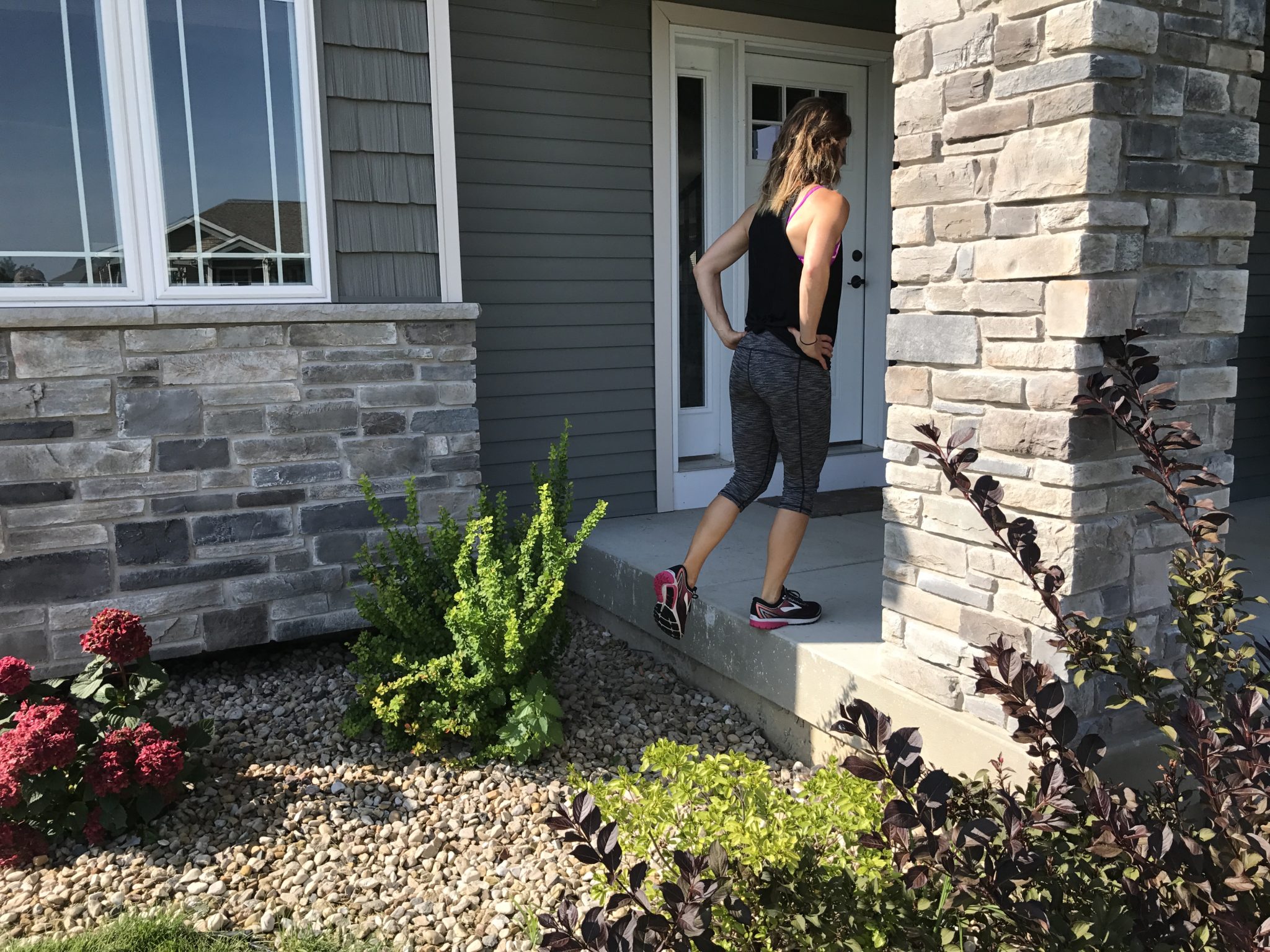
The Plank
The plank is one of the moves to master for a reason. The plank incorporates a majority of the muscle groups in the body, specifically the core. Core muscles are weakened in pregnancy and in general as we age.
By core, I don’t just mean the abdominal muscles (rectus abdominis), but also the erector spinae, internal and external obliques, transverse abdominus, and multifidi. All these muscles work together to protect the organs in your abdominal cavity, support your back, control your bladder function, and move you front to back and side to side.
Master the basic plank pictured below. Once you can hold this for 1 minute, move on to advanced plank moves.

THE WORKOUT
Now that you have all the moves, let’s put them together! This workout will have you feeling your muscles. Burns so good!
3 Rounds Total
Round 1
- 15 squats
- 15 lunges (each leg)
- 15 step-ups
- 15 second plank hold
Round 2
- 20 squats
- 20 lunges (each leg)
- 20 step-ups
- 20 second plank hold
Round 3
- 25 squats
- 25 lunges (each leg)
- 25 step-ups
- 25 second plank hold
Round 4
- 30 squats
- 30 lunges
- 30 step-ups
- 30 second plank hold
Let’s Get To It!


